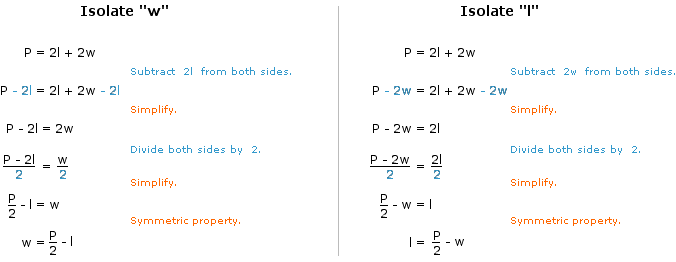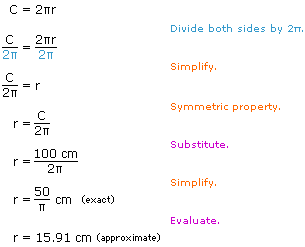Consider the formula for the perimeter of a rectangle.
l: The length of the rectangle (in units)
w: The width of the rectangle (in units)
P: The perimeter of the rectangle (in square units)

P = 2l + 2w
The formula for the perimeter of a rectangle has three variables with each variable representing a quantity. A single formula can be represented many ways. Usually one of the variables is isolated. In the formula for the perimeter of a rectangle, the variable P is isolated, although it could be expressed with the variable l or the variable w isolated (below).

Given the formula can be expressed three ways, use:

Note that formulas are usually expressed one way, with a chosen variable isolated.
Algebraic manipulations are generally used to express the formula other ways, with different variables isolated.
